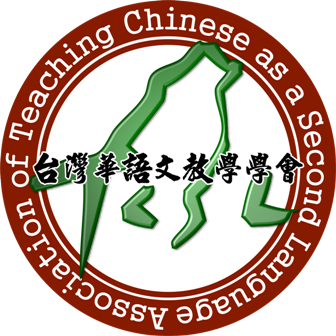目錄
Table of Contents
- 漢語「在」處所片語詞序在日文與韓文的對應 戴浩一
Pre-verbal and Post-verbal Chinese Locative zai Phrases with Reference to Their Correspondences in Japanese and Korean by James H.-Y. Tai
- 摘要
漢語「在」處所片語置於動詞之前或之後的規則建立在一個有認知基礎的語意區分。在動詞之前的語意是指涉事件發生的地點;在動詞之後的語意上是指涉人或物的地點,特別是動作結果的地點。這個區別也呈現在日文格助詞で(DE)與に(NI)的對照以及韓文에서(esΛ)與에(e)的對照。這種簡明的區分有助於日本、韓國學生,以及其他國家學習者對漢語「在」處所片語詞序的學習。
The placement of Chinese zai locative phrases before or after the main verb is based on a cognition-based semantic distinction between the location of an event and the location of an entity, especially as a result of the action. This distinction is also exhibited as de/ni distinction in Japanese, and as esΛ/e in Korean. The distinction is therefore useful in teaching the word order of Chinese zai locative phrases to Japanese students, Korean students, and students from other countries.
- 現代漢語情態副詞的語用分析──以語料庫中的「其實」一詞論述 張莉萍
The Usages of Epistemic Adverbs Based on Corpora: Exemplified by Li-Ping Chang
- 摘要
現代漢語情態副詞「其實」在對外漢語教材中的語義說明通常是以英語“actually, in fact, as a matter of fact”表示,一般把它當詞條處理,不多做說明或練習。然而只靠翻譯,對其他與之意義相近的副詞,如「事實上、實在、真的」的使用,學習者很容易產生混用。本研究先透過書面語、口語語料庫檢視「其實」在真實語料中的用法,藉著詞和詞之間橫向關係與上下文之間的縱向關係,提出「其實」的語義與語用分析,並以同樣方法分析幾個相近語義副詞的異同。本研究建議在教材中對這類副詞除了翻譯其語義外,也要有清楚的語用指引,以提高學習者對此類副詞的學習意識進而避免偏誤。
The epistemic adverbs like qishi ‘in fact’ in L2 Chinese textbooks are traditionally only listed as lexical items and translated as ‘actually, in fact, as a matter of fact’. However, they often caused learners’ confusion in usage of the near synonyms such as shishishang, shizai, and zhende. This study utilizes the syntagmatic and paradigmatic relations of the epistemic adverbs through oral as well as written corpora to analyze the semantic and pragmatic functions. It shows that there are two meanings for qishi. One use of it is to point out the fact. The other is to express something contrary to what is expected. In order to raise learners’ consciousness and to avoid errors, this study suggests in addition to the translation of lexical items, the pragmatic function of epistemic adverbs be listed in the textbook and practiced in instruction.
- 兩岸學者共同開發成語與典故知識庫的記憶 俞士汶、朱學鋒
Building the Idiom and Allusion Knowledge Base–Memories of the Joint Efforts by Scholars on Both Sides of the Taiwan Strait by Shi-Wen Yuand Xue-Feng Zhu
- 摘要
本文介紹臺灣學者羅鳳珠教授主持的國際合作研究計畫「歷代語言知識庫建置」的概貌。主持這個計畫,羅老師演奏了華彩生命的最後樂章。「漢語成語與典故知識庫」是該計畫取得的成果之一,其研製基礎是北京大學計算語言所研製的「漢語成語知識庫」和羅老師建置的「詩詞曲典故資料庫」。本文介紹連接這兩個知識庫以建置「漢語成語與典故知識庫」的技術路線、內容以及應用於成語教學的展示平臺(http://cls.hs.yzu.edu.tw/DLKB/Idiom_Index.aspx)。我們與羅老師在計算語言學與中國古典文學交叉領域的合作已歷時20餘年。在合作中,我們深切地感受到羅老師的博學、勤奮、嚴謹、善良、開朗、堅毅,羅老師的精神及其留下的豐碩研究成果永遠活在我們的心中。
This paper introduces the outline of an international research project – Building a Diachronic Language Knowledge-Base, which was directed by Prof. Fengju Lo of Yuan Ze University in Taiwan and was also the swan song of Prof. Lo’s colorful life. The Chinese Idiom- Allusion Knowledge Base is one of the achievements of this project. It is based on the Chinese Idiom Knowledge Base developed by the Institute of Computational Linguistics at Peking University and the Allusions Knowledge Base by Prof. Lo. In this paper, we introduce the technical guidelines on connecting the above two knowledge bases to build the Chinese Idiom-Allusion Knowledge Base, its content and its application to idiom teaching on a platform (http://cls.hs.yzu.edu.tw/DLKB/Idiom_Index.aspx). For more than twenty years, we have been working with Prof. Lo in an interdisciplinary field of computational linguistics and Chinese classical literature. Being our longtime and close collaborator, Prof. Lo impressed us deeply with her erudition, diligence, rigorousness, kindness, cheerfulness and perseverance, which, together with her fruitful research achievements, will stay with us forever and ever.
- 教學為導向的漢語多義動詞辨析──以「開」為例 歐德芬
An Instruction-oriented Analysis of Chinese Polysemous Verbs–A Case Study of kai by Te-Fen Ou
- 摘要
漢語動詞存在許多多義詞。就教學的角度而言,漢語中兼具高詞頻與多義項的動詞實為華語教學的重點。由於漢語多義詞義項確認不易,而且不同詞類有不同的句法特徵,其多義詞義項區辨的方式或不相同。本文基於華語詞彙語義教學的目的,辨析高詞頻兼多義項動詞的獨立義項並提出教學建議,因而以原則性多義理論(Principled Polysemy)結合次義項理論(Sub-sense Units)為多義動詞義項分析平臺,亦即結合動詞語義和句法或搭配共現等特徵,來定義多義動詞的獨立義項,以期於教學現場得以應用。本研究從詞頻統計、辭典語義與華語教材等三個面向進行高詞頻兼高義項動詞的篩選,同時以符合篩選機制的動詞「開」,進行多義動詞獨立義項分析,最後應用教學語法理論設計階段性的教學步驟,提出多義詞不同義項的教學順序,供華語教材編寫及課堂教學參考。
Many Chinese verbs are polysemy. From the perspective of pedagogy, high-frequency and polysemous verbs should be the focus of Chinese instruction. However, the identification of the senses of Chinese polysemy is extremely complicated, since the methods of distinguishing the senses of each polysemy are not necessarily the same. This paper, for the purpose of teaching the meaning of Chinese vocabulary, intends to differentiate between the individual senses and pedagogical application of high-frequency and polysemous verbs with an analysis platform constructed by Principled Polysemy (Evans 2005) and Sub-sense Units (Croft and Cruse 2004). For the application of curricula, the study combines features, such as verb senses, syntax or collocations, to define the individual senses of polysemous verbs. Furthermore, this paper attempts to screen out high-frequency verbs and polysemous verbs with frequency statistics, dictionary meanings and Chinese teaching materials. In addition, the study analyzes the individual senses of polysemous verbs with the verb kai that satisfies the screening mechanism. Finally, the author applies the theories of pedagogical grammar of Chinese and proposes the orders and procedures to teach a variety of senses of polysemous verb kai for Chinese teaching materials and curriculum pedagogy.
- Linking Motivation in Learning Chinese with National Standards for Foreign Language Learning by Heng-Hua Su
華語學習動因與外語教學標準之關聯探討 蘇珩驊
- 摘要
本文旨在探索華語學習者選修華語為第二外語的動因構成。研究對象為美國中西部某大型公立大學華語項目不同年級的學生。結合前人的研究,本文作者設計了調查問卷並創建了首個調查華語學習動因構成的綜合模型,對不同年級的學習者進行了比較,並探討了學習者的學習動因與美國外語教師協會所提出的外語學習標準之間的連結。基於研究所得,作者在文末對華語教師提出了有針對性地改進課程設置和調整教學方法的建議。
This study presents preliminary findings on various constructs of motivation in students studying Chinese at various levels in a large scale Chinese program at a Midwest university in the United States. An innovative combinational model consisting of key factors in the motivation construct is proposed to facilitate determining whether the goals put forth in the National Standards align with the motivation constructs that students have for the language learning. Similarities and differences across levels were also examined. Based on the results found, suggestions are made to assist Chinese program directors and instructors to develop their curriculum and implement effective pedagogical methods.
